How about savoring the unique flavor of oysters cooked with rice? Kaki Gohan, a dish in which the rich umami of oysters blends perfectly with rice, is a beloved dish during oyster season in Japan. My recipe includes special techniques to ensure the oyster flavor permeates every grain of rice, creating a truly delightful experience.
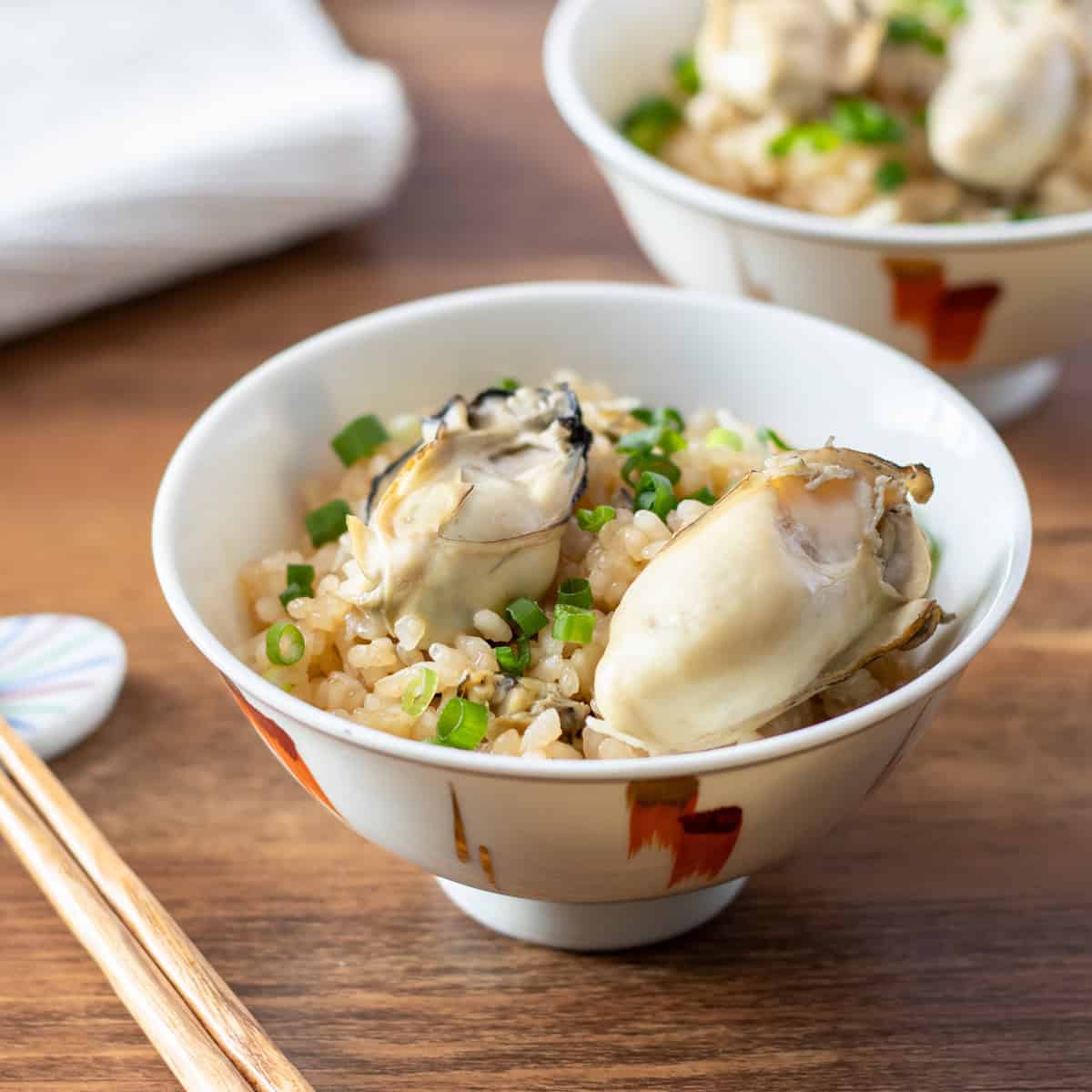
Jump to:
What is Kaki Gohan?
Kaki Gohan is a traditional Japanese dish made by cooking rice with oysters and seasoning it with Japanese ingredients, such as dashi stock, mirin, and soy sauce. "Kaki" means oyster, and "Gohan" refers to rice. In Japan, it is also called "Kaki Meshi" ("Meshi" is another term for rice), and is known as one of the classic ways to enjoy oysters.
While oysters are delicious on their own, cooking them with rice transforms them into a hearty and satisfying meal. The rich oyster flavor infuses the rice, making every bite flavorful and ensuring that you won’t get tired of it. If you are an oyster lover, this is definitely a dish worth trying.
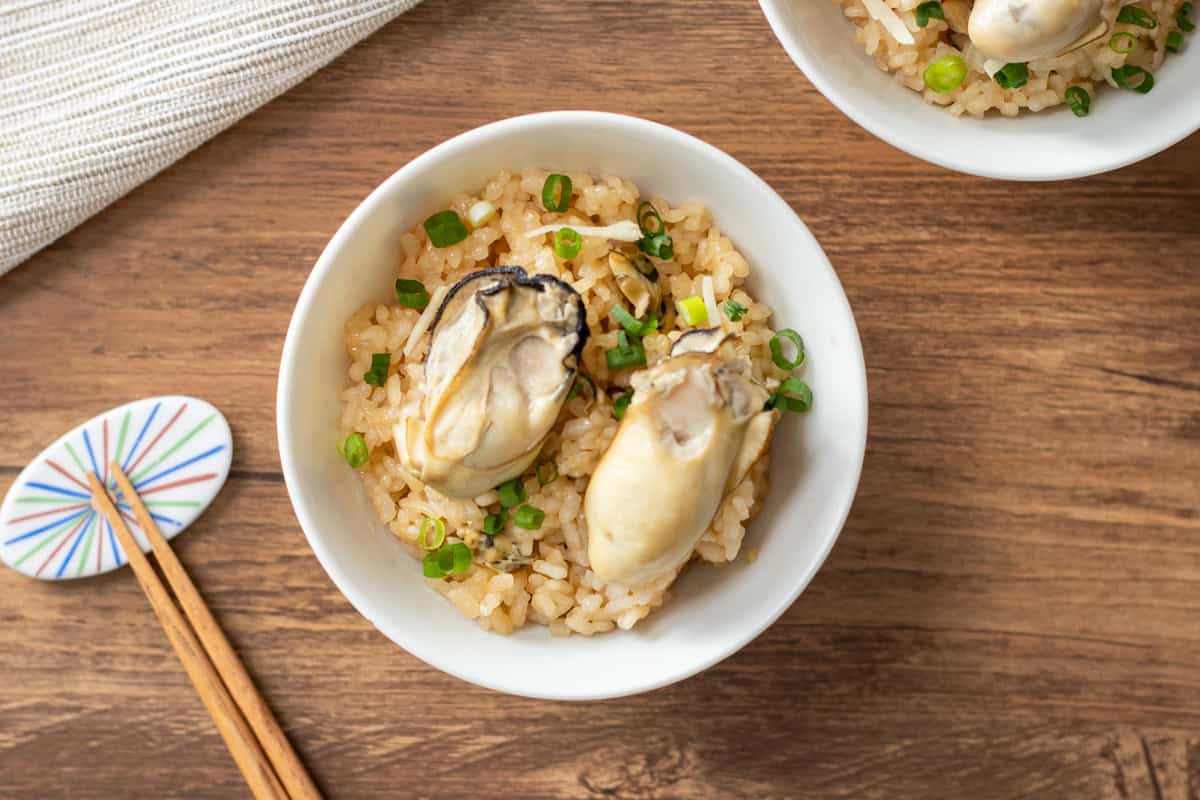
How to infuse oyster flavor perfectly
The key to making delicious kaki gohan is to infuse rice with the rich flavor of oysters while preserving their texture. However, simply cooking rice together with oysters won’t achieve this, as the heat causes oysters to shrink and lose their desirable texture.
To avoid this, it is recommended to briefly blanch the oysters and use the flavorful stock created during the process to cook the rice. By using the stock and adding the oysters after the rice is cooked, you can transfer their flavor to the rice while keeping their texture intact.
This method allows you to enjoy perfectly textured oysters alongside rice infused with their savory essence. Additionally, in the recipe, I suggest an extra step to enhance the oyster flavor even further: chop some of the oysters and add them to the rice while it cooks. This distributes the oyster flavor more evenly throughout the rice, allowing you to enjoy both rice infused with the rich flavor of oysters and whole oyster pieces as a topping.
The detailed steps are included in the recipe. It is a small effort, but it significantly enhances the dish's flavor and texture, so I highly recommend incorporating it into your cooking.
Cooking tools
The tool you need to make this dish is the same as the one used to cook regular Japanese rice: a pot or a rice cooker.
In Japan, while most households have a rice cooker, it is less common outside of Japan, so I’m sharing a recipe using a pot here. Of course, you can also use a rice cooker; in that case, simply replace the pot with the rice cooker in the recipe.
To learn more about How to Cook Japanese Rice on the Stove, please refer to the linked page.
Seasonal Japanese rice dishes
In Japan, there are many types of cooked rice dishes made with fresh, seasonal ingredients. One representative rice dish in winter is kaki gohan, but there are also other seasonal varieties, such as Mame Gohan (green pea rice), Corn Rice, Ginger Rice, Kuri Gohan (chestnut rice), and Satsumaimo Gohan (Japanese sweet potato rice), all prepared according to the season.
In traditional Japanese kaiseki restaurants, it is customary to serve a rice dish made with seasonal ingredients before dessert. If you have the opportunity to try kaiseki cuisine, pay attention to the ingredients used in the rice dishes—you will surely experience the essence of the season.
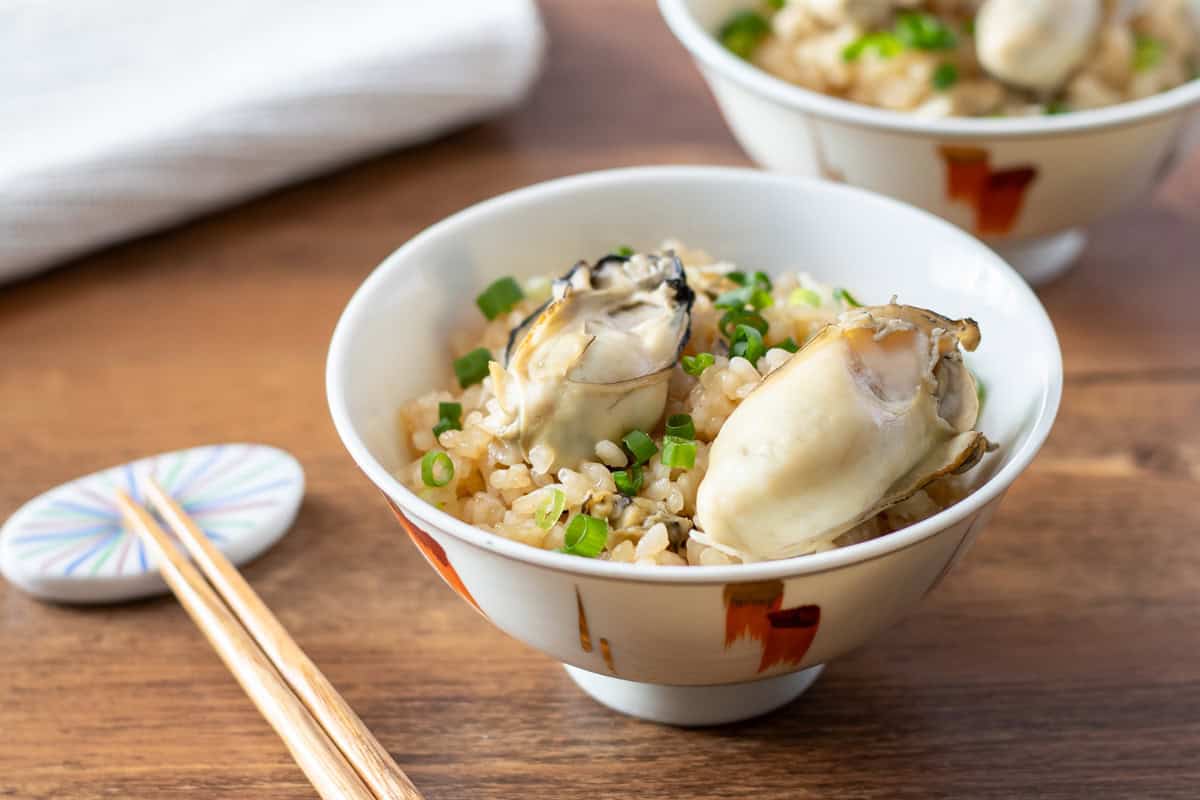
📋Step-by-step recipe
Ingredients
- ¾ cup Japanese short-grain rice (1 rice cooker cup for 2 servings)
- 6 oz shucked oysters (Gently rinse them beforehand to remove any grit or debris.)
- 0.17 oz ginger
- 1 green onion / scallion
For simmering oysters:
- 2 Tbsp sake
- ¼ tsp salt
Seasonings:
- ½ Tbsp mirin
- 1 Tbsp light soy sauce (You can substitute it with regular soy sauce; the main difference is the color.)
- ⅔ cup or less kombu dashi or water (For instructions on how to make it, please refer to the linked page.)
Instructions
🕒 Total: 1 hr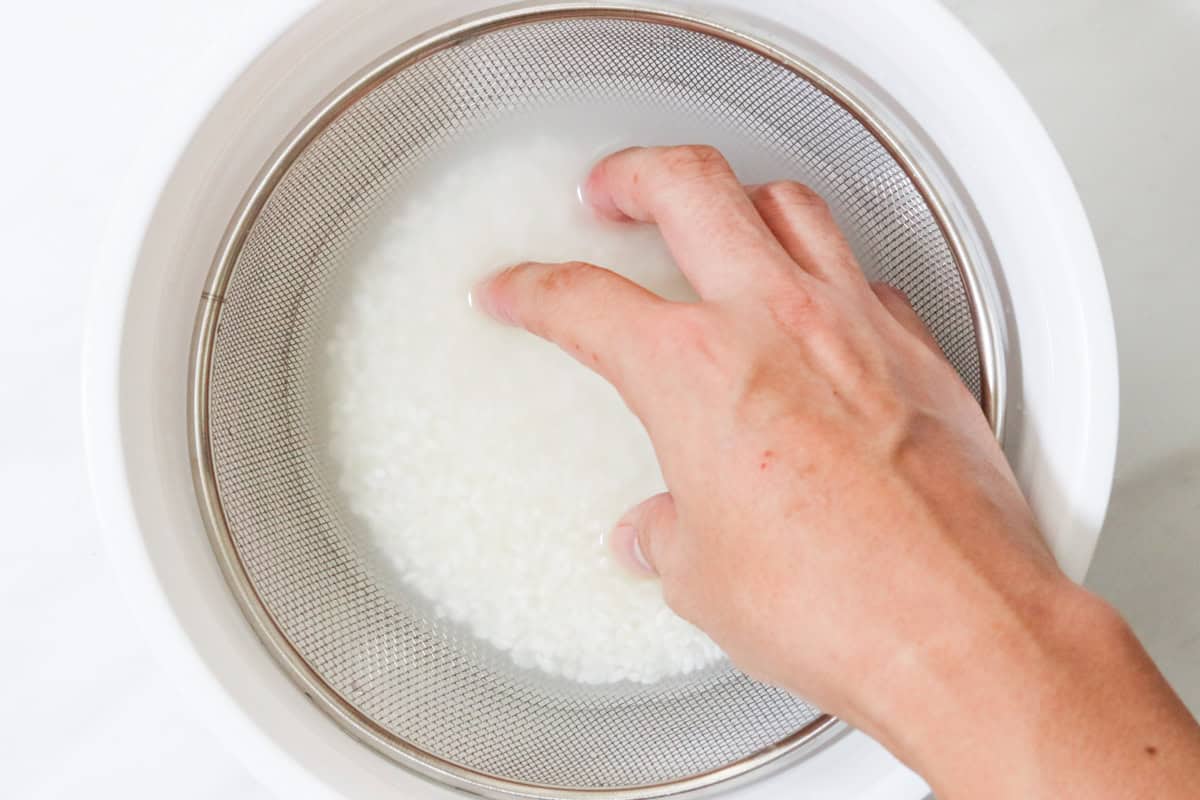
Step 1
Place a sieve over a bowl, add rice, and rinse it with water. Repeat this process several times, changing the water each time.
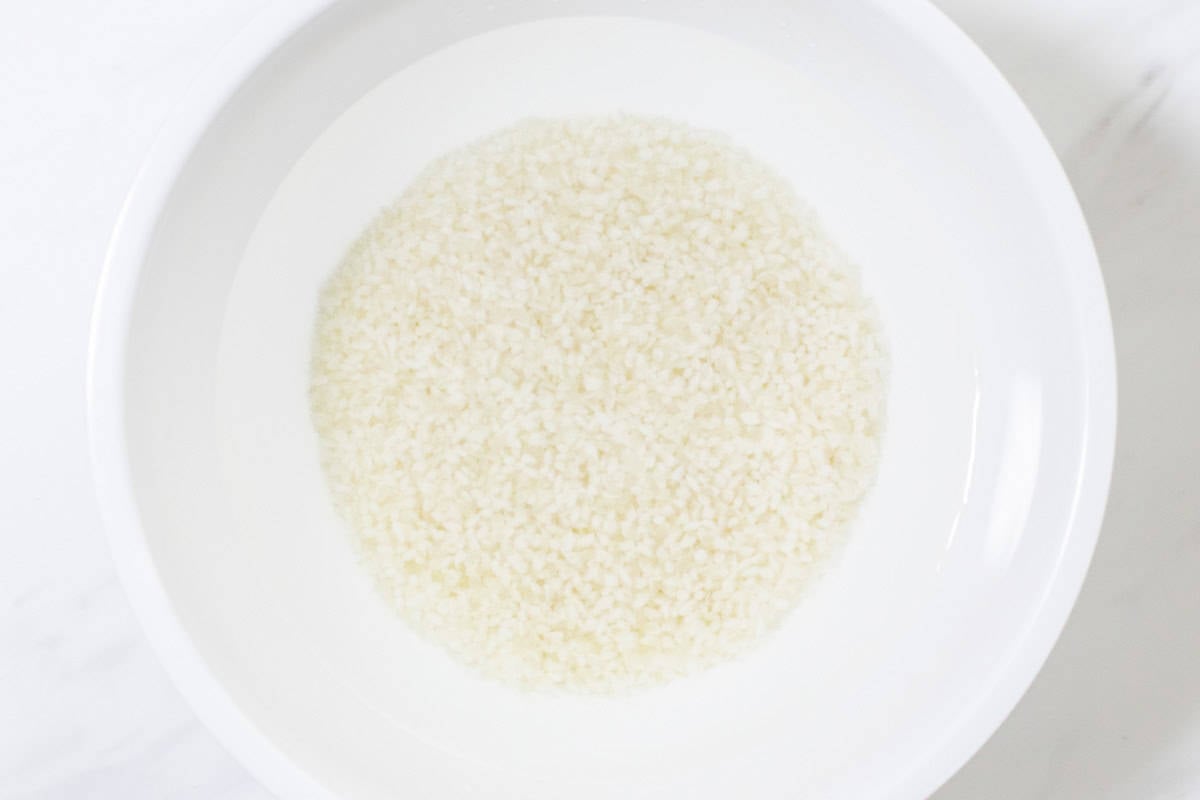
Step 2
Soak the rinsed rice in water in the bowl for at least 30 minutes.
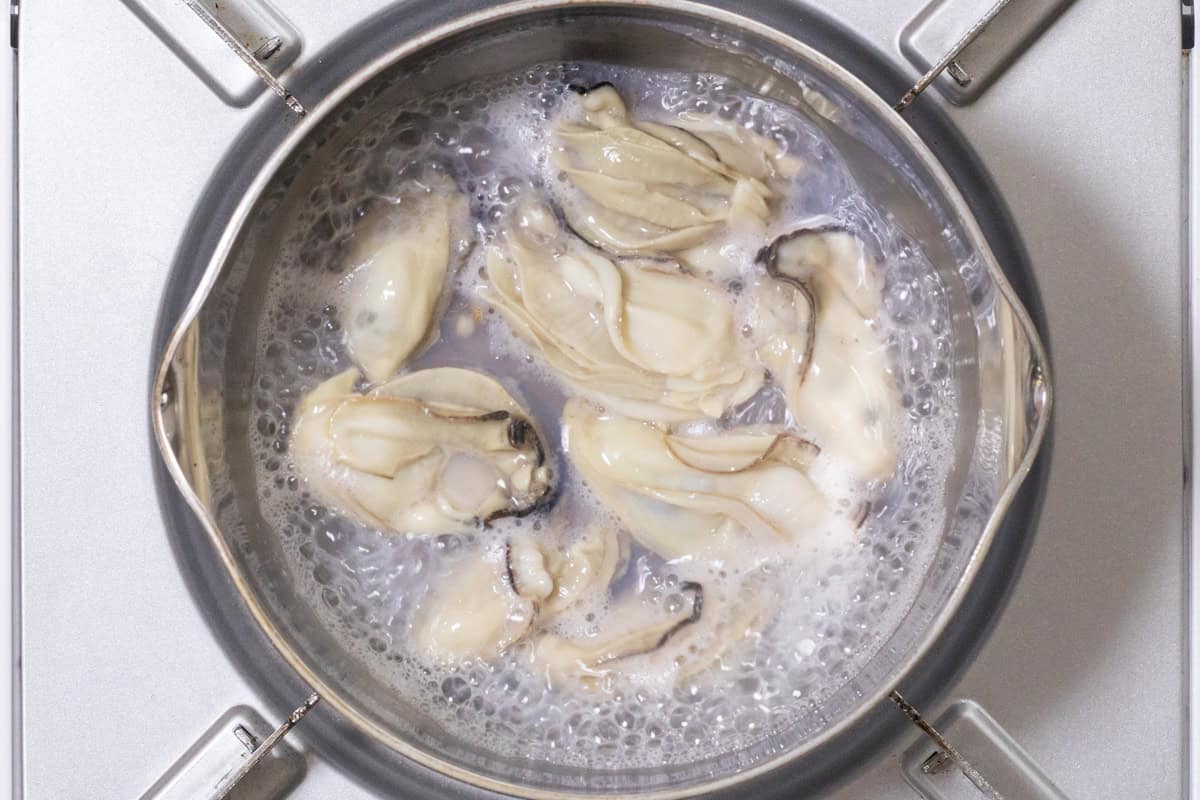
Step 3
Add sake and salt to a small pot and bring it to a boil. Once it starts to boil, reduce the heat to medium and add oysters. Let them simmer for a few minutes, flipping them halfway through.
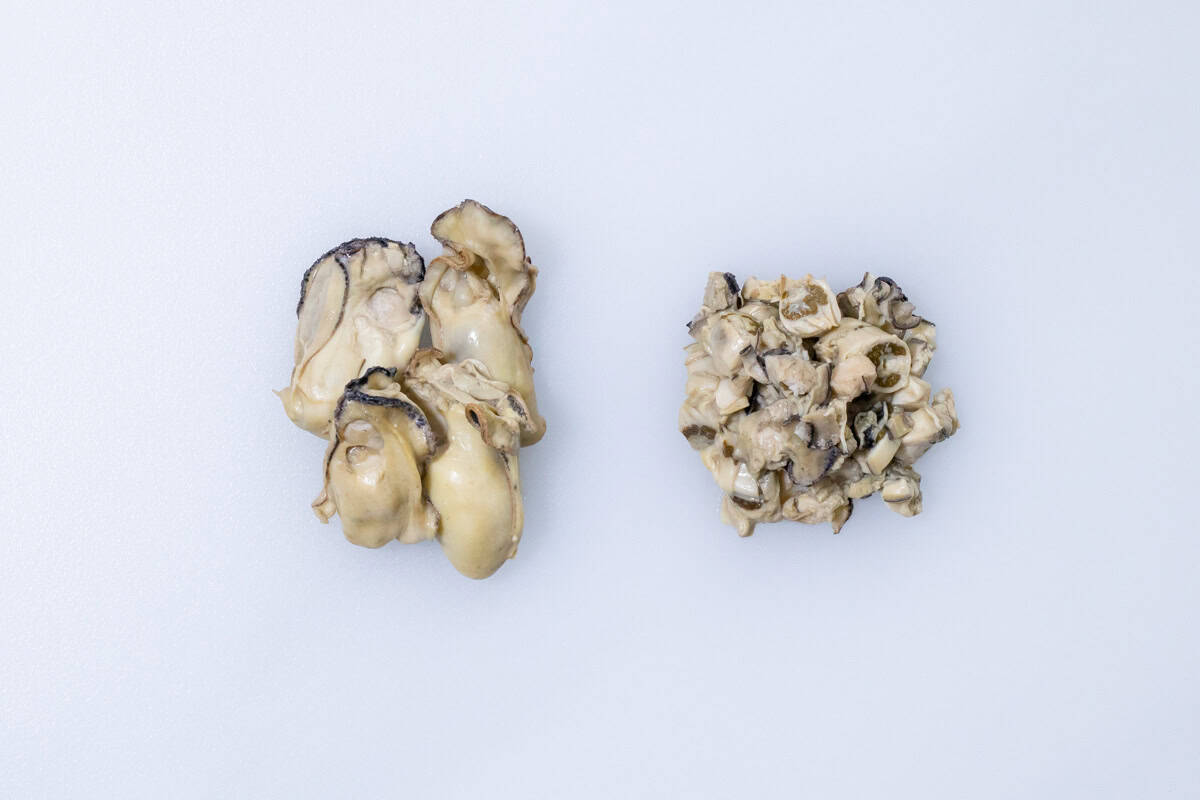
Step 4
Remove the oysters from the pot. Chop half of them and leave the other half whole. Do not discard the cooking liquid, as it will be used later.
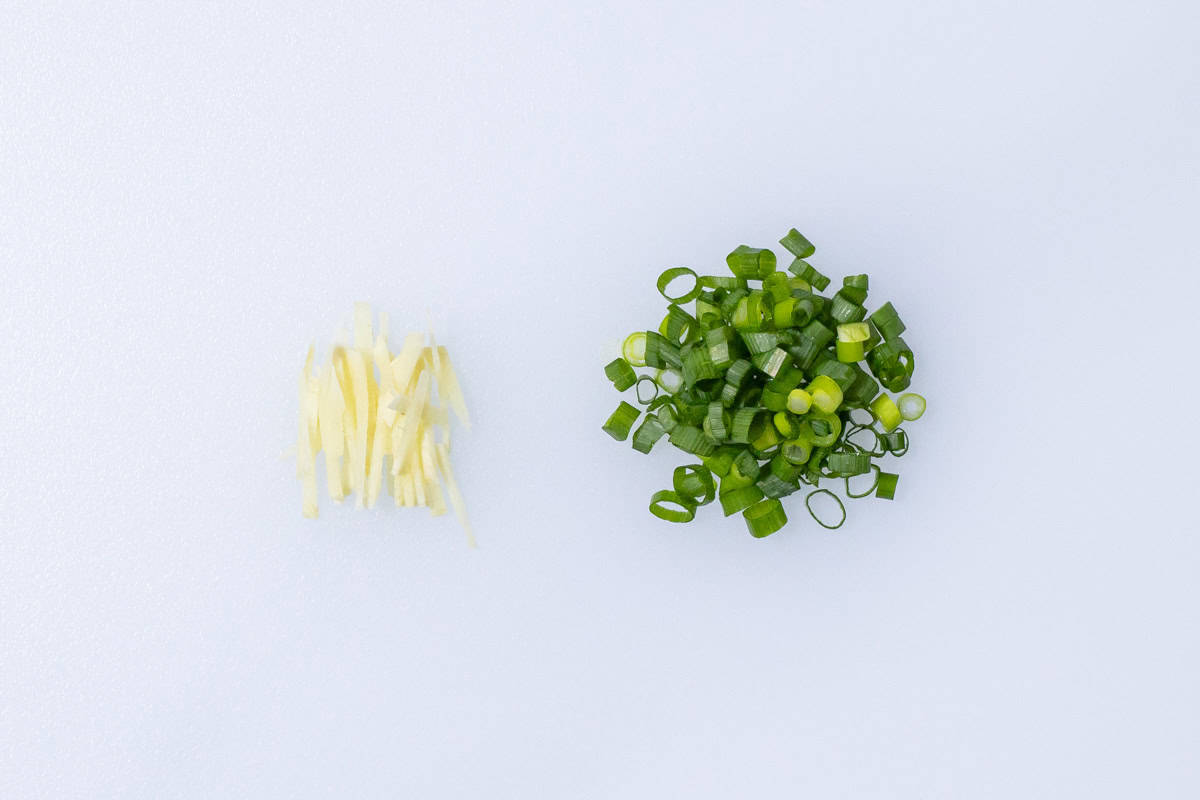
Step 5
Peel the ginger and slice it into thin strips. Thinly slice the green onion.
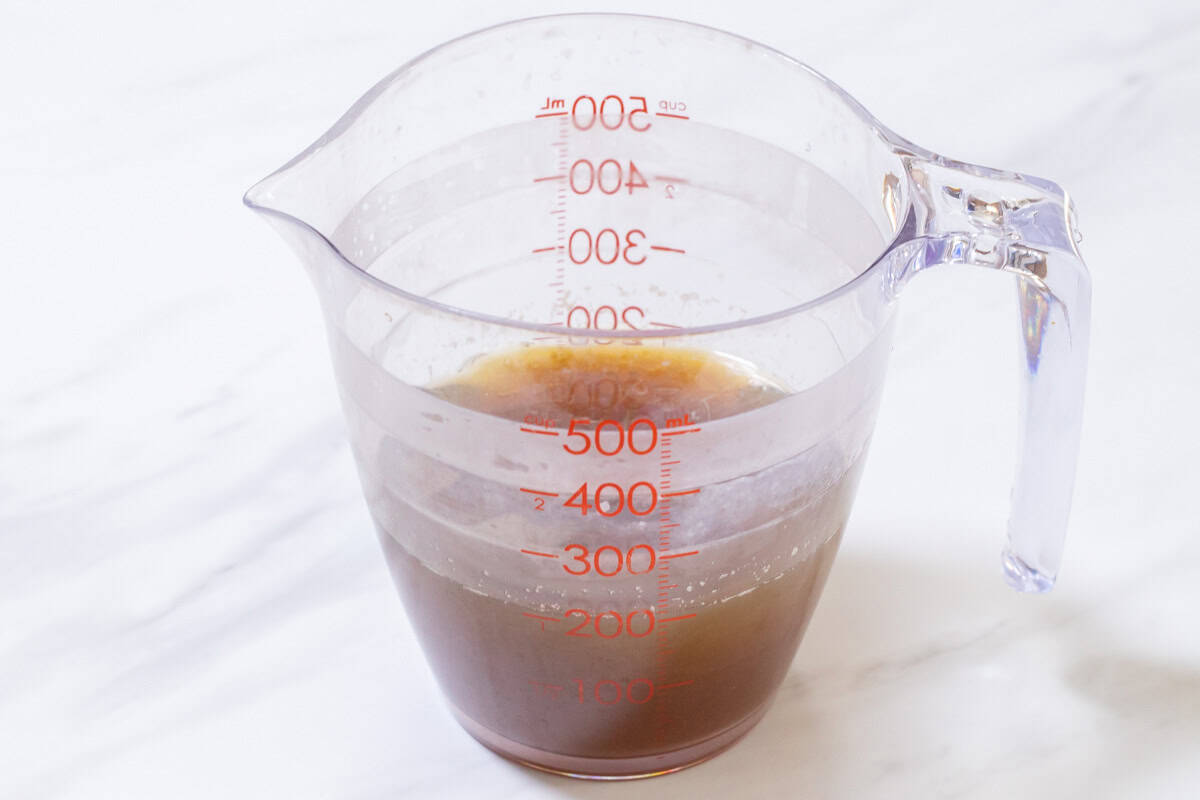
Step 6
Transfer the cooking liquid from the pot to a measuring cup. Add mirin and light soy sauce, then pour in kombu dashi (or water, if kombu dashi is unavailable) until the total volume reaches ⅚ cup (200 ml) for 2 servings. For 4 servings, use 1 ⅔ cups (400 ml), and for 6 servings, use 2 ½ cups (600 ml).
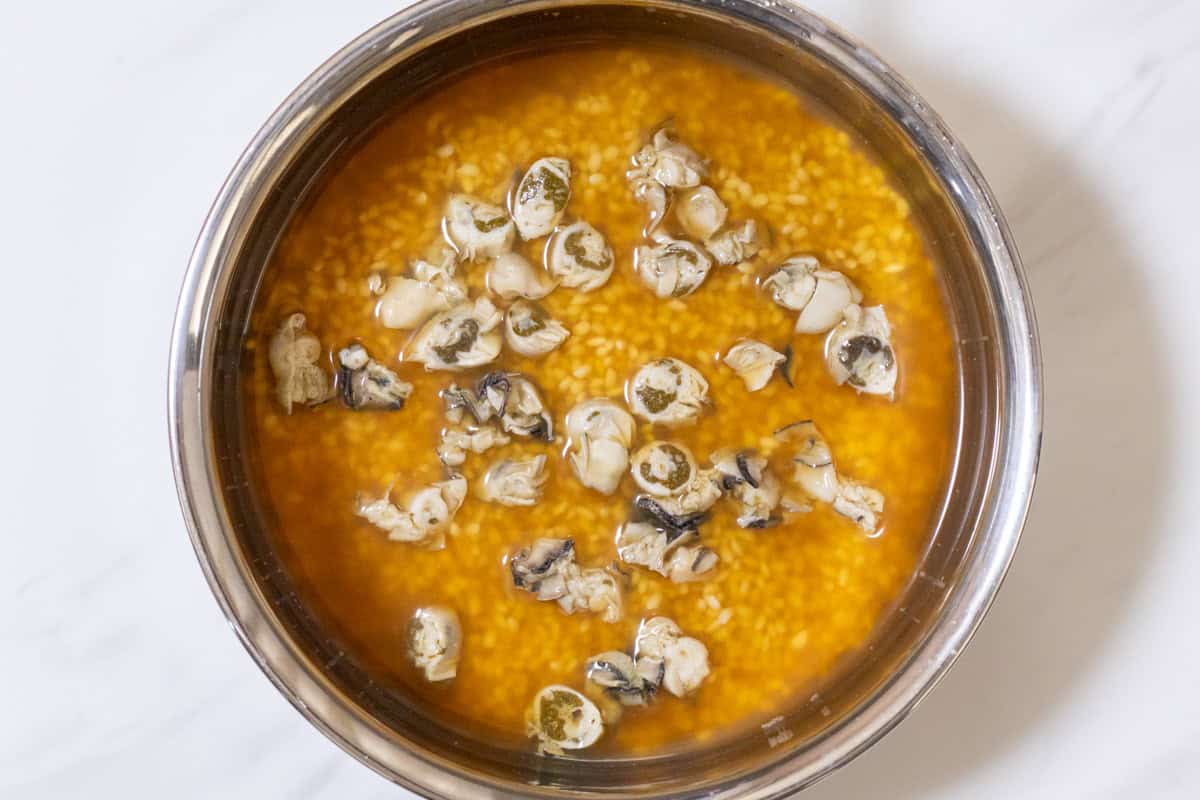
Step 7
Drain the water used to soak the rice. Add the drained rice along with the seasoned liquid from the measuring cup to a large pot. Then, evenly distribute the chopped oysters on top.
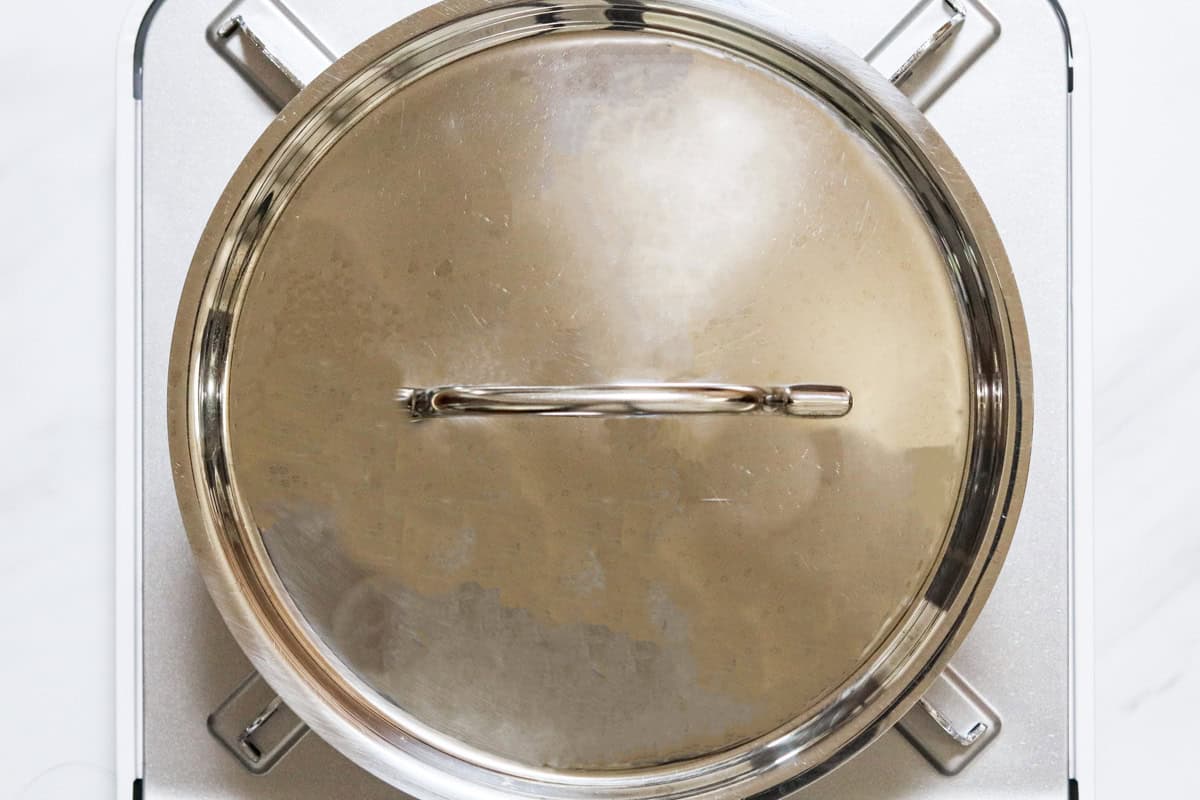
Step 8
Cover the pot and bring it to a boil. Once boiling, reduce the heat to low and cook for 10 minutes, or slightly longer for larger quantities (11 minutes for 4 servings, 12 minutes for 6 servings).
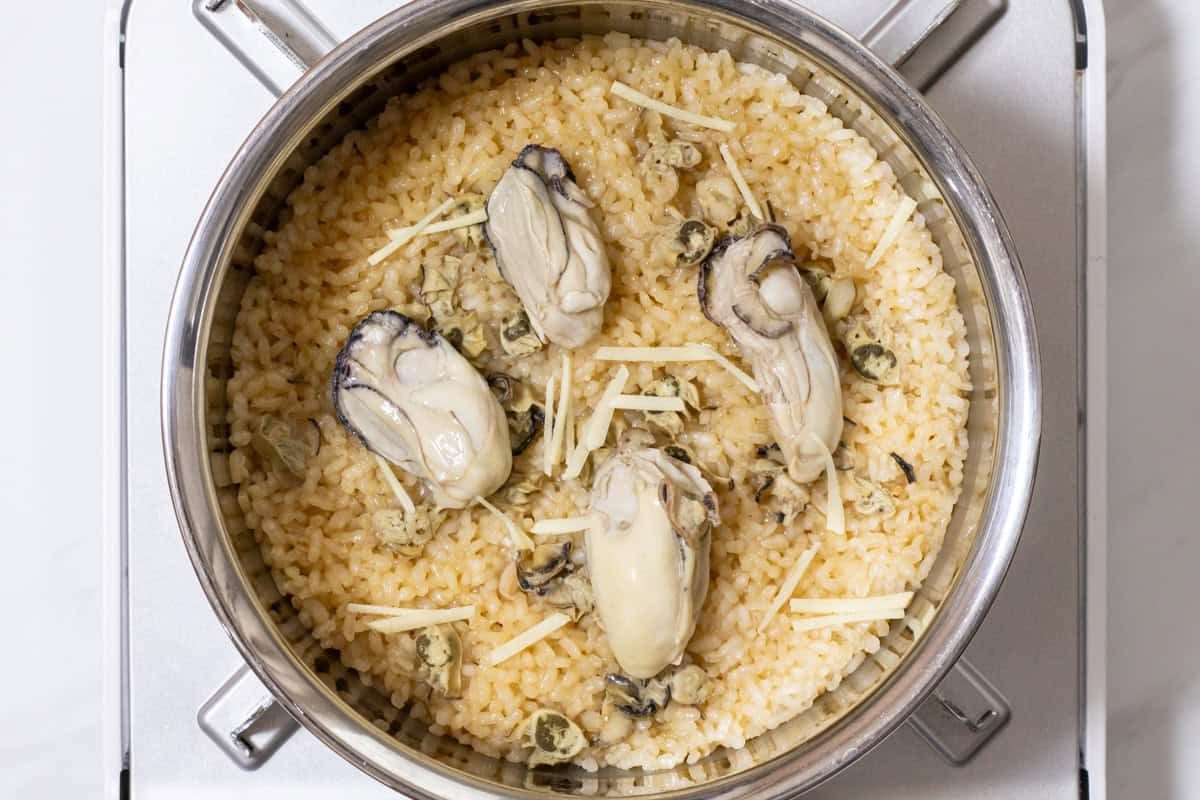
Step 9
Turn off the heat. Remove the lid and arrange the remaining whole oysters and ginger on top. Cover the pot again and let it steam for 10 minutes. (If you are using a rice cooker instead of a pot, add the oysters after the rice has cooked, close the lid, and let them steam for about 5 minutes.)
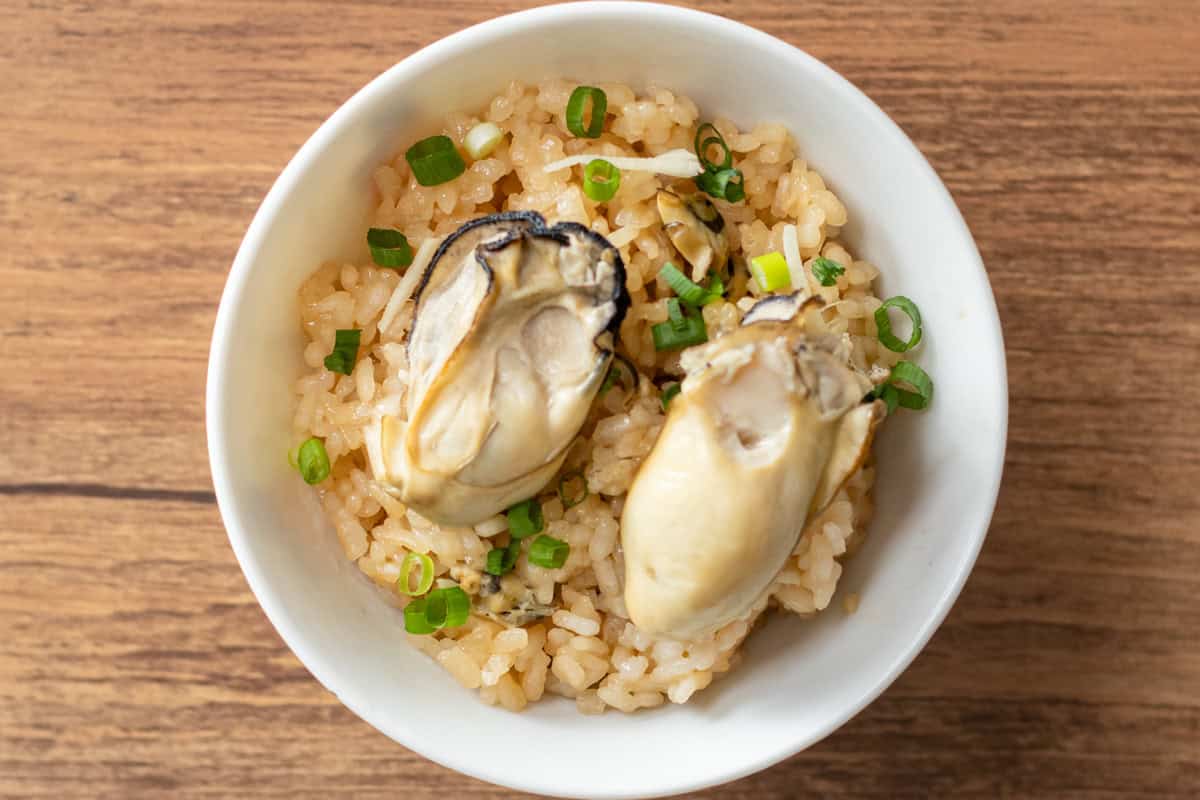
Step 10
Serve in individual bowls and garnish with the green onions.
To store
You can store it in the refrigerator for up to 2 days.
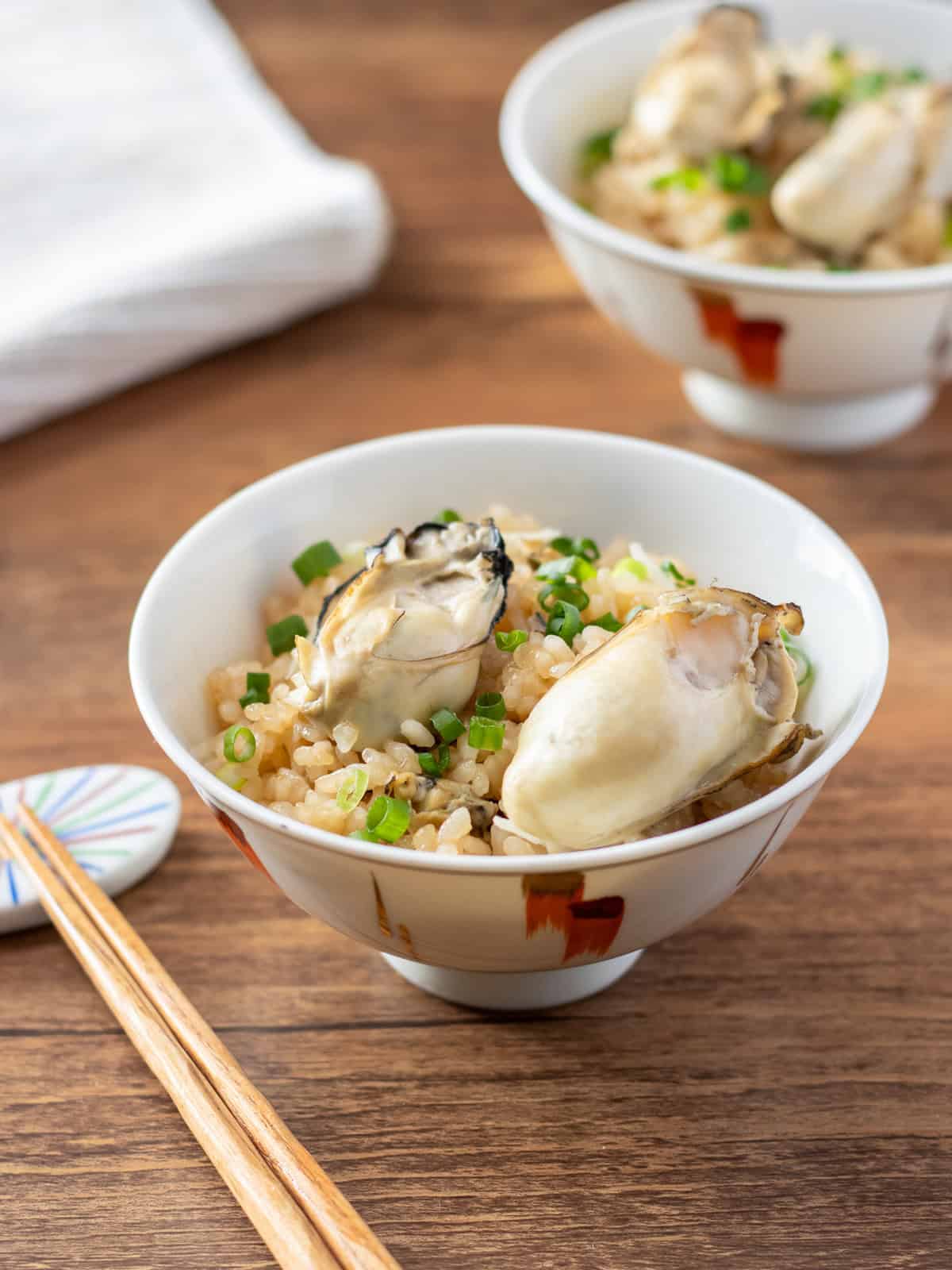
If you try this recipe, I’d love to hear what you think. Please consider leaving a review and star rating in the comments below. If you enjoyed it, I’d really appreciate it if you shared it with your friends.
Recipe card

Kaki Gohan (Japanese Oyster Rice)
Ingredients
- ¾ cup Japanese short-grain rice (1 rice cooker cup for 2 servings)
- 6 oz shucked oysters (Gently rinse them beforehand to remove any grit or debris.)
- 0.17 oz ginger
- 1 green onion / scallion
For simmering oysters:
- 2 Tbsp sake
- ¼ tsp salt
Seasonings:
- ½ Tbsp mirin
- 1 Tbsp light soy sauce (You can substitute it with regular soy sauce; the main difference is the color.)
- ⅔ cup or less kombu dashi or water (For instructions on how to make it, please refer to the linked page.)
Instructions
- Place a sieve over a bowl, add rice, and rinse it with water. Repeat this process several times, changing the water each time.
- Soak the rinsed rice in water in the bowl for at least 30 minutes.
- Add sake and salt to a small pot and bring it to a boil. Once it starts to boil, reduce the heat to medium and add oysters. Let them simmer for a few minutes, flipping them halfway through.
- Remove the oysters from the pot. Chop half of them and leave the other half whole. Do not discard the cooking liquid, as it will be used later.
- Peel the ginger and slice it into thin strips. Thinly slice the green onion.
- Transfer the cooking liquid from the pot to a measuring cup. Add mirin and light soy sauce, then pour in kombu dashi (or water, if kombu dashi is unavailable) until the total volume reaches ⅚ cup (200 ml) for 2 servings. For 4 servings, use 1 ⅔ cups (400 ml), and for 6 servings, use 2 ½ cups (600 ml).
- Drain the water used to soak the rice. Add the drained rice along with the seasoned liquid from the measuring cup to a large pot. Then, evenly distribute the chopped oysters on top.
- Cover the pot and bring it to a boil. Once boiling, reduce the heat to low and cook for 10 minutes, or slightly longer for larger quantities (11 minutes for 4 servings, 12 minutes for 6 servings).
- Turn off the heat. Remove the lid and arrange the remaining whole oysters and ginger on top. Cover the pot again and let it steam for 10 minutes. (If you are using a rice cooker instead of a pot, add the oysters after the rice has cooked, close the lid, and let them steam for about 5 minutes.)
- Serve in individual bowls and garnish with the green onions.
Notes
- You can store it in the refrigerator for up to 2 days.

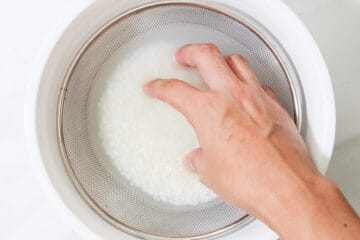
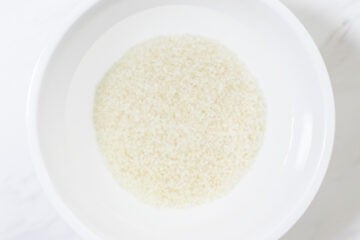
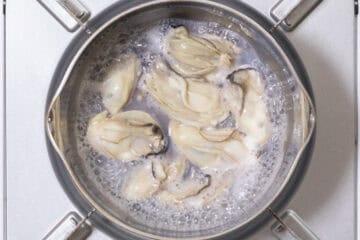
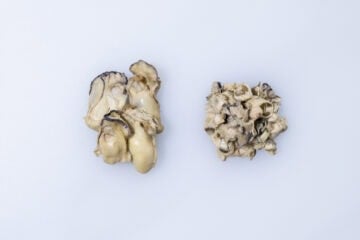
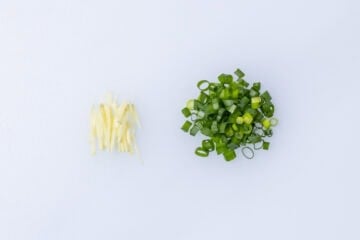




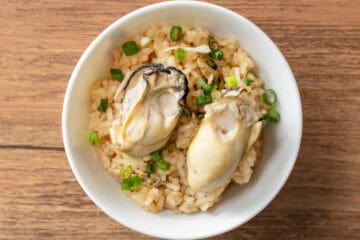


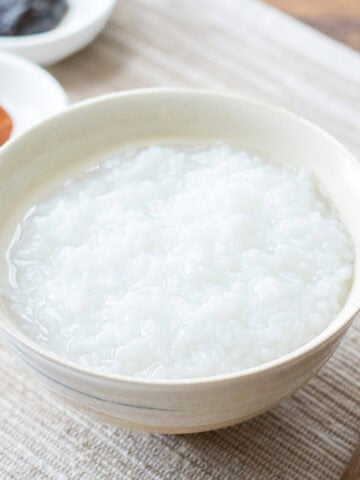

Leave a Rating and a Comment